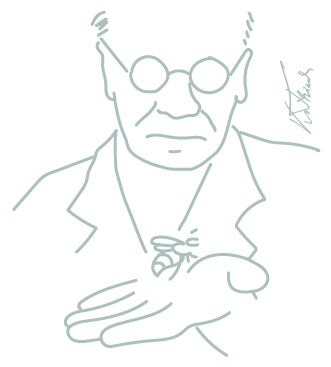Honey consumption choice drivers in Cuyo, Argentina
DOI:
https://doi.org/10.52559/eunk.v3i1.51Keywords:
honey consumption, values, intention to purchase, short circuits, intermediate citiesAbstract
This paper focuses on the consumption of honeys in the Cuyo region. We consider that it is important to recover a view that works in a related way the consumption and production systems anchored in the territory. Thus, in view of the generalized situation of a country that exports most of its production, it is important to recover what happens with the consumption of this product in the interior of the country in one that is marginal to the country's production. During the year 2021, virtual discussion groups were carried out in order to inquire about the consumption of honeys with people who were consumers in the periurban areas of Cuyo. Thus, this work has a strong exploratory component that allows us to recover both observable and non-observable aspects of honey consumption. We worked both on the systematization material of the focus groups and on a socio-demographic questionnaire that each participant individually answered at the end of the collective work session. Regarding the main results, we observed consumption levels higher than those identified by the national average and other reference studies in the interior of the country. Likewise, we recognize that honey is established as a product that is sensitive to intersectional aspects: education, gender and income. Likewise, with respect to the possibility of thinking of it linked to the territorial production system, the resignification of the idea of proximity stands out. That is to say, we are not only referring to physical proximity and proximity to production (less intermediaries), but also to proximity by sought-after attributes. Precisely, we find that honey is consolidated as a product of multiple uses. That is to say, a diverse use of honeys predominates, standing out among the main uses both as a spread and for medicinal purposes. And here comes into play the nature-society link that is established and the search to think of systems of characterization of honeys that can provide useful information to strengthen a dialogue between the honey consumption and production sectors.
Downloads
References
Alves M., Silva S., Pigatto G., Amorim F. 2022. Sustainable performance of honey and propolis production in the countryside of the State of São Paulo. Custos e Agronegocio, 18: 307-329. www.custoseagronegocioonline.com.br.
Andrieu, J., Allasino, M. y Rodriguez-Savall, F., (2022), “Reflexiones desde la economía social y solidaria sobre la apicultura sanjuanina”, Gaceta del Colmenar, 649. Disponible en: https://sada.org.ar/reflexiones-desde-la-economia-social-y-solidaria-sobre-la-apicultura-sanjuanina/
Andrieu, J., Fernández-Uclés, D., Mozas-Moral, A., & Bernal-Jurado, E. (2021). Popularity in Social Networks. The Case of Argentine Beekeeping Production Entities. Agriculture, 11(8), 1-12. doi.org/10.3390/agriculture11080694 DOI: https://doi.org/10.3390/agriculture11080694
Andrieu, J.; Rodriguez Savall, M F. y Allasino, M., (2018), “Circuitos cortos de comercialización: estrategias para el sostenimiento de la apicultura familiar sanjuanina”, IV Congreso del Foro de Universidades para la Agricultura Familiar, La Rioja, Mayo 2018.
Apablaza, O., Basilio, A. M., Ciappini, M. C., Fagundez, G. A., Gaggiotti, M. D. C., Gutiérrez, A., ... & Winter, J. (2019). Guía para la caracterización de mieles argentinas.Link: https://ri.conicet.gov.ar/handle/11336/151129
Basilio, A. M., López, V. C., Landi, L., Mellado, L. M., Pedraza, F., Molina, G. A. R., & Gurini, L. B. (2023). Apicultura Argentina: contexto fundacional y elementos de resiliencia del sector. Facultad de Agronomía, Universidad de Buenos Aires.
Caravaca, A. M. G. (2009). Caracterización de alimentos funcionales mediante metodologías separativas avanzadas y aplicaciones a tecnología de alimentos (Doctoral dissertation, Universidad de Granada). Link:https://dialnet.unirioja.es/servlet/dctes?codigo=69923
Carciofi, I., Guevara-Lynch, J. P., Cappelletti, L., Maspi, N. y López, S. (2021). Economías regionales: red de actores, procesos de producción y espacios para agregar valor. Documentos de Trabajo del CCE, 10,1-97
De-Groot, G.S.; Aizen, M.A.; Sáez, A.; Morales, C.L. Large-scale monoculture reduces honey yield: The case of soybean expansion in Argentina. Agric. Ecosyst. Environ. 2021, 306, 107203 DOI: https://doi.org/10.1016/j.agee.2020.107203
Dos Santos Marques, I. C., Theiss, L. M., Johnson, C. Y., McLin, E., Ruf, B. A., Vickers, S. M., Fouad, M. N., Scarinci, I. C., & Chu, D. I. (2020). Implementation of virtual focus groups for qualitative data collection in a global pandemic. En American Journal of Surgery. Elsevier Inc. https://doi.org/10.1016/j.amjsurg.2020.10.009 DOI: https://doi.org/10.1016/j.amjsurg.2020.10.009
Ferrari, C., Currao, H., & Bessone, J. (2011). La Apicultura Argentina y sus regiones. Una visión panorámica. 1ed. Buenos Aires: Consejo Federal de Inversiones. ISBN 978-987-510-158-6.
García, N. (2016). Análisis de las posibles causas de la baja del precio internacional de la miel. American Bee Journal, 887-882.
Gudiño J.,; Pérez, M.; Rodríguez-Ibañez, G. y Guzmán, F. (2021). Sistemas agroalimentarios y sustentabilidad. En Aportes estratégicos al sistema agroalimentario regional (Mendoza – San Juan) / compiladores Jorge Silva Colomer... [et al.]. – Buenos Aires : Ediciones INTA; Centro Regional Mendoza - San Juan, 2021. 142 p.: 15.
Guix, J. (2003). Analizando los “porqués”: los grupos focales. Revista de Calidad Asistencial, 18(7), 598-602. DOI: https://doi.org/10.1016/S1134-282X(03)77644-1
Hamui-Sutton, A., & Varela-Ruiz, M. (2013). La técnica de grupos focales. Investigación en Educación Médica, 2(5), 55-60. https://doi.org/https://doi.org/10.1016/S2007-5057(13)72683-8 DOI: https://doi.org/10.1016/S2007-5057(13)72683-8
Horská E, Petriľák M, Šedík P, Nagyová Ľ. Factors Influencing the Sale of Local Products through Short Supply Chains: A Case of Family Dairy Farms in Slovakia. Sustainability. 2020; 12(20):8499. https://doi.org/10.3390/su12208499 DOI: https://doi.org/10.3390/su12208499
Ismaiel, S., Al Kahtani, S., Adgaba, N., Al-Ghamdi, A. A., & Zulail, A. (2014). Factors that affect consumption patterns and market demands for honey in the Kingdom of Saudi Arabia. Food and Nutrition Sciences, 2014. DOI: https://doi.org/10.4236/fns.2014.517186
Krueger, R. A., y Casey, M. A. (2000). Focus groups: A practical guide for applied researchers (3.a ed.). Thousand Oaks, CA, EE. UU.: Sage.
MAGyP, (2020), Alimentos Argentinos. Apicultura. Renapa. Obtenido de http://www.alimentosargentinos.gob.ar/HomeAlimentos/Apicultura/renapa.php
Onwuegbuzie, A. J., Dickinson, W. B., Leech, N. L., & Zoran, A. G. (2011). Un marco cualitativo para la recolección y análisis de datos en la investigación basada en grupos focales. Paradigmas: una revista disciplinar de investigación, 3(2), 127-157.
Pippinato L., Blanc S., Mancuso T., Brun F. 2020. A sustainable niche market: how does honey behave? Sustainability, 12(24): 10678, https://doi.org/10.3390/su122410678. DOI: https://doi.org/10.3390/su122410678
Pocol, C. B., & Marghitas, L. A. (2008). Qualitative exploration of honey among consumer segments by using the focus group method. Bulletin of University of Agricultural Sciences and Veterinary Medicine Cluj-Napoca. Horticulture, 65(2). https://doi.org/10.15835/buasvmcn-hort:1130
Pocol, C. B., & Teselios, C. M. (2012). Socio-economic determinants of honey consumption in Romania. Journal of Food, Agriculture & Environment, 10(2 Part 1), 18-21.
Roman, A., Popiela-Pleban, E., & Kozak, M. (2013). Factors influencing consumer behavior relating to the purchasing of honey part 1. The buying process and the level of consumption. Journal of Apicultural Science, 57(2), 159-172. https://doi.org/10.2478/jas-2013-0026 DOI: https://doi.org/10.2478/jas-2013-0026
Scaglione, A. (2016). Percepción del consumidor de miel de abejas en la ciudad de La Plata [Universidad Nacional de La Plata]. En Facultad de Ciencias Agrarias y Forestales: Vol. Ingeniero. http://sedici.unlp.edu.ar/handle/10915/56144
Šedík, P., Pocol, C. B., Horská, E., & Fiore, M. (2019). Honey: food or medicine? A comparative study between Slovakia and Romania. British Food Journal, 121(6), 1281-1297. DOI 10.1108/BFJ-12-2018-0813 DOI: https://doi.org/10.1108/BFJ-12-2018-0813
SENASA 2024, Consulta de establecimientos apícolas, Sistema de registros, del Servicio Nacional de Sanidad y Calidad Agroalimentaria (SENASA, 2024).https://aps2.senasa.gov.ar/registros/faces/publico/establecimientos/tr_lacteos_apicolas.jsp al dia 2024.03.07
Urquiza Jozami, G., Berges, M., Casellas, K., De Greef, G., Gil, J. M., & Liseras, N. (2019). Preferencias del consumidor y canales cortos de comercialización de miel en Mar del Plata. http://nulan.mdp.edu.ar/3248/
Vila-Ramos, F.; Boyso-Manceraa, L.P.; Borja-Bravob, M.; Cuevas-Reyesc, V. y Sánchez-Toledanod, B.I. (2022). Typology of honey consumers with a university education in Mexico. Rev. mex. de cienc. pecuarias, 13(4), 879-893. https://doi.org/10.22319/rmcp.v13i4.6005 DOI: https://doi.org/10.22319/rmcp.v13i4.6005
Published
How to Cite
License
Copyright (c) 2024 Jimena Andrieu, Diego Tello

This work is licensed under a Creative Commons Attribution 4.0 International License.
Authors who publish with this journal agree to the following terms:
- Authors retain copyright and grant the journal right of first publication with the work simultaneously licensed under a Creative Commons Attribution License 4.0 that allows others to share the work with an acknowledgement of the work's authorship and initial publication in this journal.
- Authors are able to enter into separate, additional contractual arrangements for the non-exclusive distribution of the journal's published version of the work (e.g., post it to an institutional repository or publish it in a book), with an acknowledgement of its initial publication in this journal.
- Authors are permitted and encouraged to post their work online (e.g., in institutional repositories or on their website) prior to and during the submission process, as it can lead to productive exchanges, as well as earlier and greater citation of published work.
Funding data
-
Instituto Nacional de Tecnología Agropecuaria
Grant numbers INTA 2019-PD-E10-I222-001;INTA 2019-51.PL310-001









